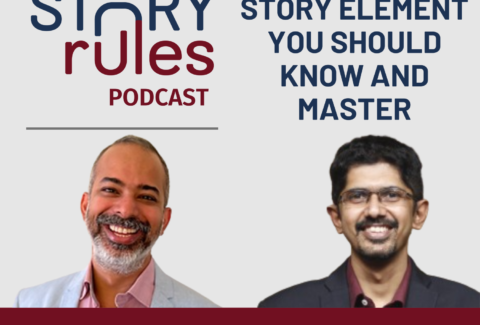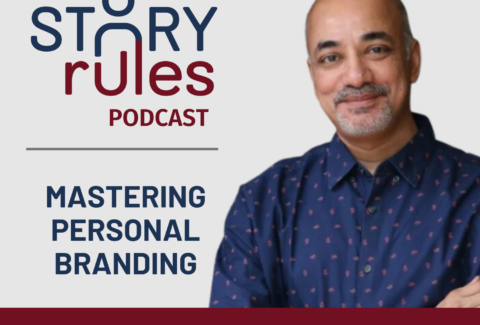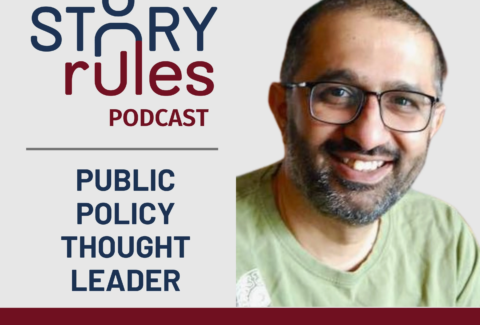Amazon’s competitive advantage: Narrative

Amazon’s competitive advantage: Narrative
Till 2003, a weekly ritual would play out in the Amazon head office. Every Tuesday their S-Team (the seniormost leadership group) would meet for four hours to discuss progress on key goals.
The team would select two to four S-Team goals and do a deep dive into their progress using PowerPoint presentations by the relevant team.
Four hours being spent by a dozen-odd folks – that’s expensive leadership time.
And it was not being spent well.
“Too often, we found the presentations did not serve the purpose for which they were intended. The format often made it difficult to evaluate the actual progress and prevented the presentations from proceeding as planned. The deep dives were, in short, frustrating, inefficient, and error-prone for both the presenter and the audience.”
That quote is from Colin Bryar and Bill Carr (senior Amazon executives) in their latest book, ‘Working Backwards: Insights, Stories, and Secrets from Inside Amazon’, which released recently.
In early 2004, after a particularly difficult S-Team meeting, Colin Bryar and Jeff Bezos were on a business flight, when they read an essay called “The Cognitive Style of PowerPoint: Pitching Out Corrupts Within,” by Edward Tufte, a Yale professor, who’s a guru on data visualisation.
Tufte was a PowerPoint sceptic, and used evocative language to describe its ills. One line, in particular, resonated with Bezos and Bryar:
“As analysis becomes more causal, multivariate, comparative, evidence-based, and resolution-intense, the more damaging the bullet list becomes.”
Basically, Bezos and Bryar would have been vigorously nodding their heads to the problem diagnosis by Tufte. They were ready for the solution.
Tufte was not one for incremental approaches. He had a radical recommendation.
“For serious presentations, it will be useful to replace PowerPoint slides with paper handouts showing words, numbers, data graphics, images together.”
That sounds impactful. But how do you persuade dozens of senior leaders to give up their current way of doing things and migrate to a new, uncertain and difficult way?
Tufte’s suggestion? Use brute force.
“Making this transition in large organizations requires a straightforward executive order: From now on your presentation software is Microsoft Word, not PowerPoint. Get used to it.”
In any other organisation, this may have resulted in some discussion and deliberation before a decision was reached. But this was Amazon.
Here are Bryar and Carr:
“On June 9, 2004, the members of the S-Team received an email with the following subject line: ‘No PowerPoint presentations from now on at S-Team.’ The message was simple, direct, and earthshaking: from that day forward, S-Team members would be required to write short narratives describing their ideas for presentation at S-Team meetings. PowerPoint was henceforth banned.”
On the same day, Bezos justified this action with an email to the S-Team:
“Well structured, narrative text is what we’re after rather than just text. If someone builds a list of bullet points in word, that would be just as bad as PowerPoint.
The reason writing a 4-page memo is harder than “writing” a 20 page PowerPoint is because the narrative structure of a good memo forces better thought and better understanding of what’s more important than what, and how things are related.
Powerpoint-style presentations somehow give permission to gloss over ideas, flatten out any sense of relative importance, and ignore the interconnectedness of ideas.”
And that was the birth of the famous “Six-Page-Narrative” of Amazon.
From then on, it was as if a switch had been turned on at Amazon. At subsequent S-Team meetings, all leaders could express themselves clearly, comprehensively and evocatively in prose…
I’m kidding of course.
Writing is Hard
The transition from PowerPoint to written narratives was extremely challenging. Here are the authors again:
“The first few narratives were laughably poor when evaluated by today’s standards. Some teams ignored the length limit, which was meant to keep the narratives brief enough so they could be read in the meeting itself. Enthusiastic teams, who felt their idea could not be adequately expressed in such a limited space, came in with 30 or 40 pages of prose. When authors learned that we were serious about a page limit, some squeezed as much as text onto a page as possible, using tiny fonts, reducing the width of the margins, and single-spacing the text. We wanted to go back to the benefits of writing, but not to the look of a sixteenth-century document.”
I was chuckling reading some of these, thinking “Hey, I’d have probably done the same!”.
Which brings me to the key realisation of this letter: Writing is hard.
When I was in consulting, we used to joke to each other: “Slides jitne chaahe banwa lo, report mat likhwana” (‘Ask for as many PowerPoint slides from us as you want, but please don’t ask us to write a report’).
I remember a memorable course at IIM-A called “Written Analysis and Communication” or WAC. In the course, we would be given a case and be asked to analyse the same and come up with a recommendation.
Oh but there was a catch. The report had to be max 1,000 words or less.
And there was a submission deadline.
When working on the report, people – bright, smart, articulate people – would suddenly find their hands frozen at the keyboard.
“Where to start?”, “Where does this damned idea go?”, “This just doesn’t make sense” – were just some of the mental minefields we would try to navigate as we torturously ploughed through the paragraphs.
There was even a term for the mad dash that students would make to the Faculty office to submit the report printout: WAC Run.
(I’m guessing that nowadays it would be an online submission. Sigh, so dull).
Amazon perseveres
Given these challenges with writing, it seemed like a tall order to expect senior executives at Amazon to suddenly become proficient in this critical skill.
In fact, it may seem that instead of the best “Presenters”, it would be the best “writers” who tend to shine in such a system.
However, in a recent podcast episode about the book, Bryar and Carr argue that that’s not the case. They say that it’s the “best thinkers write the best narrative”.
Their point: if you can think clearly, you can learn to write with clarity too. Amazon persevered with the new initiative … and the tide slowly turned.
The Power of the Narrative
Now, the six-page narrative is touted as a major ‘competitive advantage’ for Amazon.
Here’s Bryar on the above-mentioned podcast episode:
“How is it possible that Amazon can effectively manage such diverse businesses? One of my number one arguments is that they use narratives to conduct meetings, not PowerPoint.”
Why do narratives work better – there are several reasons cited by these leaders:
- Narratives convey more information per page (about 7-10X of traditional PowerPoint as per these leaders).
- People read faster than people can talk – so its more time-efficient to read instead of listening.
- When writing, you can have multi-causal arguments and make connections between messages.
- When it comes to words on paper, the idea is supreme. There are no advantages for charismatic speakers, nor do introverts face any disadvantage.
- Visual design/graphical skills do not become a bottleneck
Jeff Bezos wrote about the importance of this initiative in his 2018 letter to shareholders (took him long enough!) which I had analysed in this post.
The US political commentator, Fareed Zakaria – himself a compelling writer – made the Amazon six-page-narrative a key pillar of his argument in favour of honing your writing skills.
The bottom line – if done right, the narrative approach to meetings can be a game-changer for all companies.
Should you do it then? Banish PowerPoint and move on to Word narratives in your organisation?
Yes and no. Yes to Narratives, not so much to Word.
I think there is a massive set of advantages that a visual medium like PowerPoint can give – and some of the narrative advantages that Word provides can also be available in PowerPoint.
How can you craft a visual Narrative on PowerPoint? Now that is the topic for a later post!
Photo: Pexels







